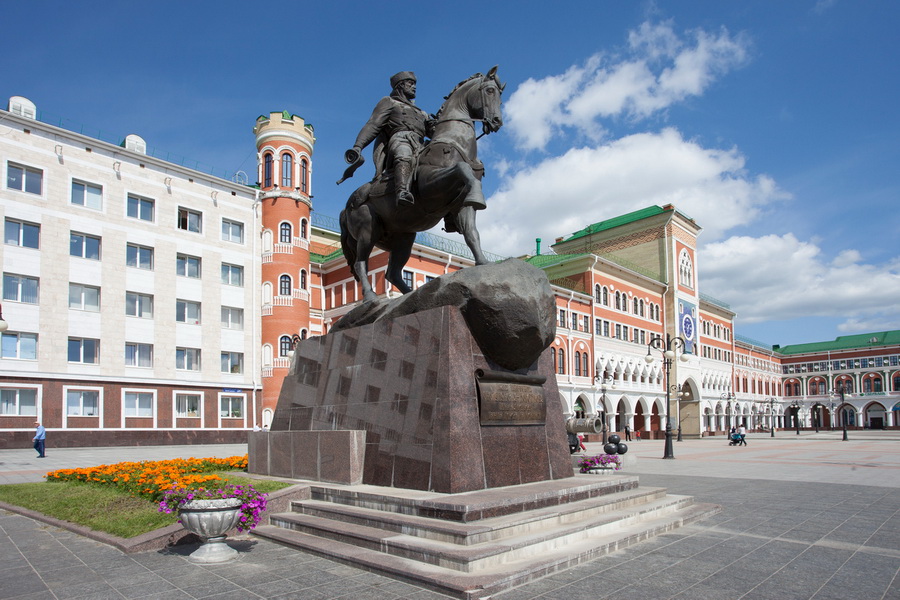
Obolensky-Nogotkov Square in Yoshkar-Ola, Russia includes some of the most fascinating sights of the city, and as such is one of its most popular attractions. Built in a Venetian style, its opening in 2007 was timed to coincide with the 87th anniversary of the formation of Mari Autonomous Region, of which Yoshkar-Ola is the capital.
The center of Obolensky-Nogotkov Square is marked by a monument of the same name which is dedicated to Ivan Obolensky-Nogotkov, the first governor of present-day Yoshkar-Ola. Standing at a height of 6 meters and weighing around 6 tons, the bronze sculpture depicting the governor on a horse is impressive for its sheer size. Now a historical city symbol, Ivan Obolensky-Nogotkov Monument is a main attraction of the square from which most city tours begin.
A striking representation of the architecture for which Obolensky-Nogotkov Square is noted is the colorful Venetian-style National Art Gallery. The main exhibition hall of Yoshkar-Ola, it hosts world-class exhibitions and is equipped with advanced technology such as “The Russian Museum: The Virtual Branch”, which allows visitors to experience unique St. Petersburg museum exhibits. Other highlights include the works of Russia’s finest painters which adorn the walls of National Art Gallery and a permanent exhibition called "Mari Color" that introduces visitors to the ethnic and cultural heritage of the Mari people.
Above the large central arch of National Art Gallery is the unusual Tower Clock which is now symbolic of Yoshkar-Ola. The unique fixture attracts tourists not only with its beautiful chimes but also with a small mechanical performance played on the hour. The short production depicts a donkey saving the Icon of the Mother of God The Three-Handed, an image once located in Serbia which was salvaged from destruction during war by being tied to a donkey which carried it to Hilandar Monastery on Mount Athos. The clock performance was created by local students and is the only one of its kind in Russia.
A half copy of the Tsar Cannon, whose front section is decorated with reliefs depicting Tsar Fyodor I Ivanovich on horseback, is another interesting monument in Obolensky-Nogotkov Square. The legendary cannon was cast at a local factory and has now become a popular photo spot.
A more somber site is Monument to Bishop Leonid of Mari. A native to the region from a simple peasant family, St. Leonid became a monk at the age of 16. In the coming years he was placed in prison camps and experienced many persecutions, yet his trials only motivated him to continue his work with valor. In 1937, Leonid was arrested and accused of counter-revolutionary activities, and on Christmas Day 1938, he was shot and killed.
Perhaps the most eclectic monument of Obolensky-Nogotkov Square in Yoshkar-Ola is Yoshkin Cat sculpture, which has sat near the main entrance of Mari State University since 2011. Yoshkin Cat depicts a feline sitting comfortably on a street bench which is covered with a newspaper called "Naked Truth", a fish skeleton lying at his side. The name of the monument symbolizes the Cyrillic letter "Y" (Й), which is also the first letter of the city’s name. The image is based on the expression "Yoshkin cat", a common exclamation of surprise in Russian. Some believe that if you sit next to the cat and whisper your heart's desire into his ear, your dream will come true. It is also said that you can attract good luck by shaking the cat's paw or rubbing his nose.

